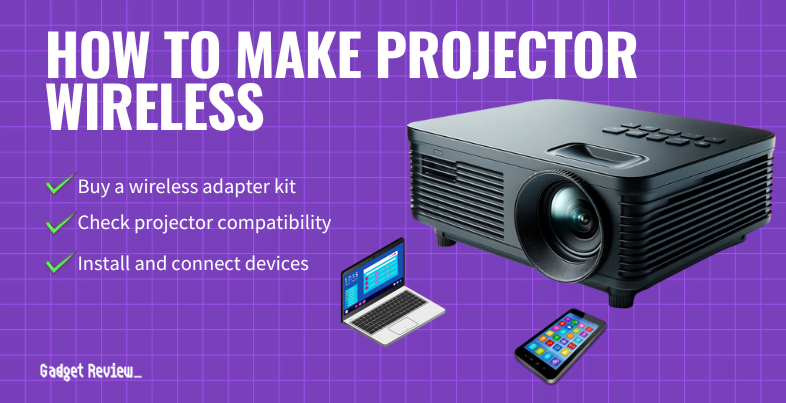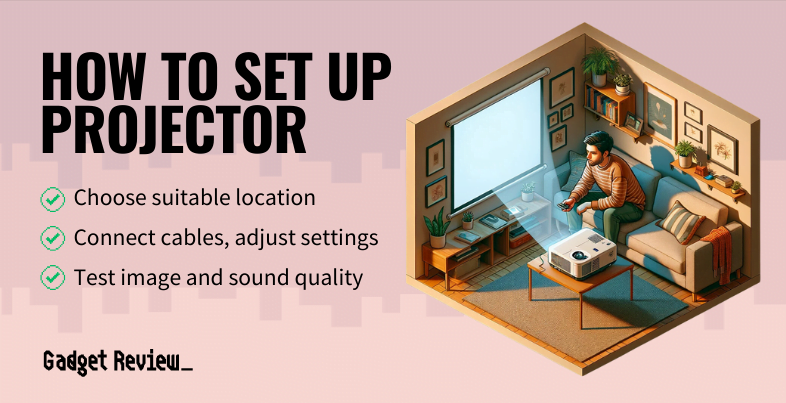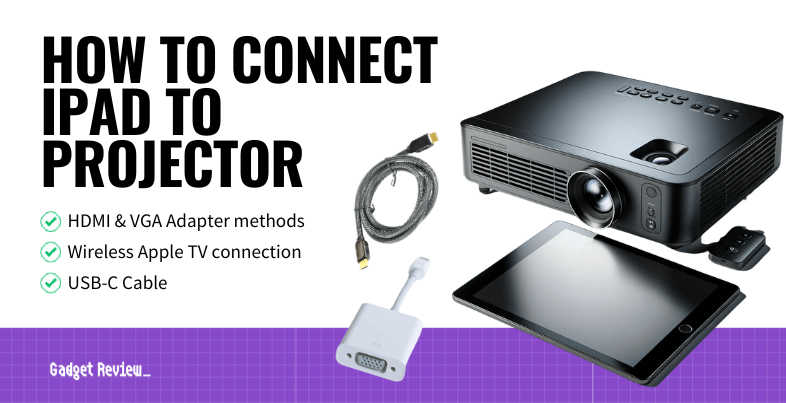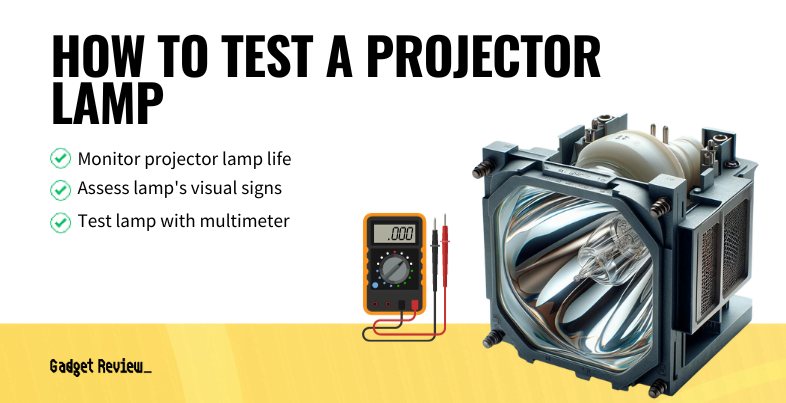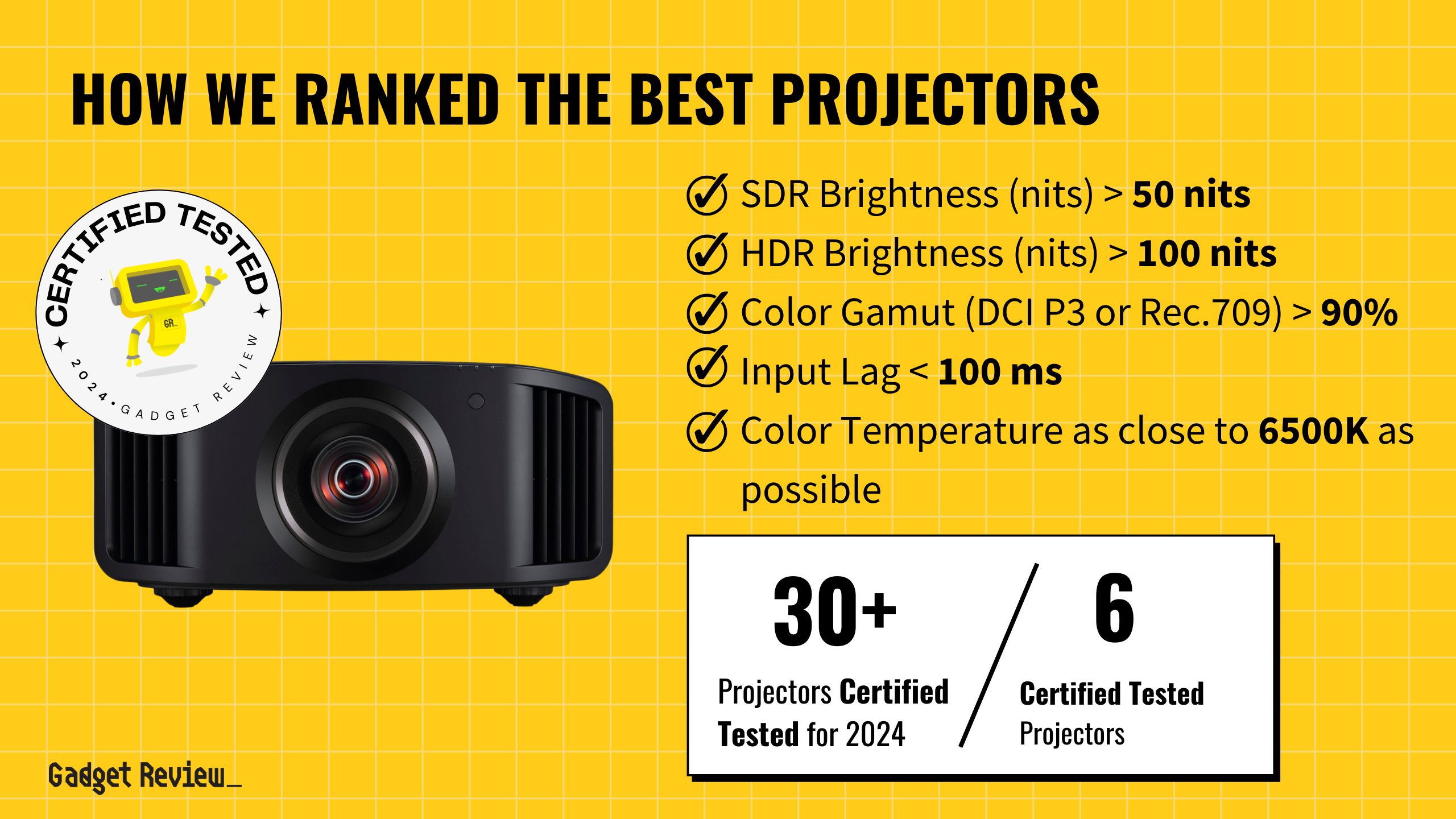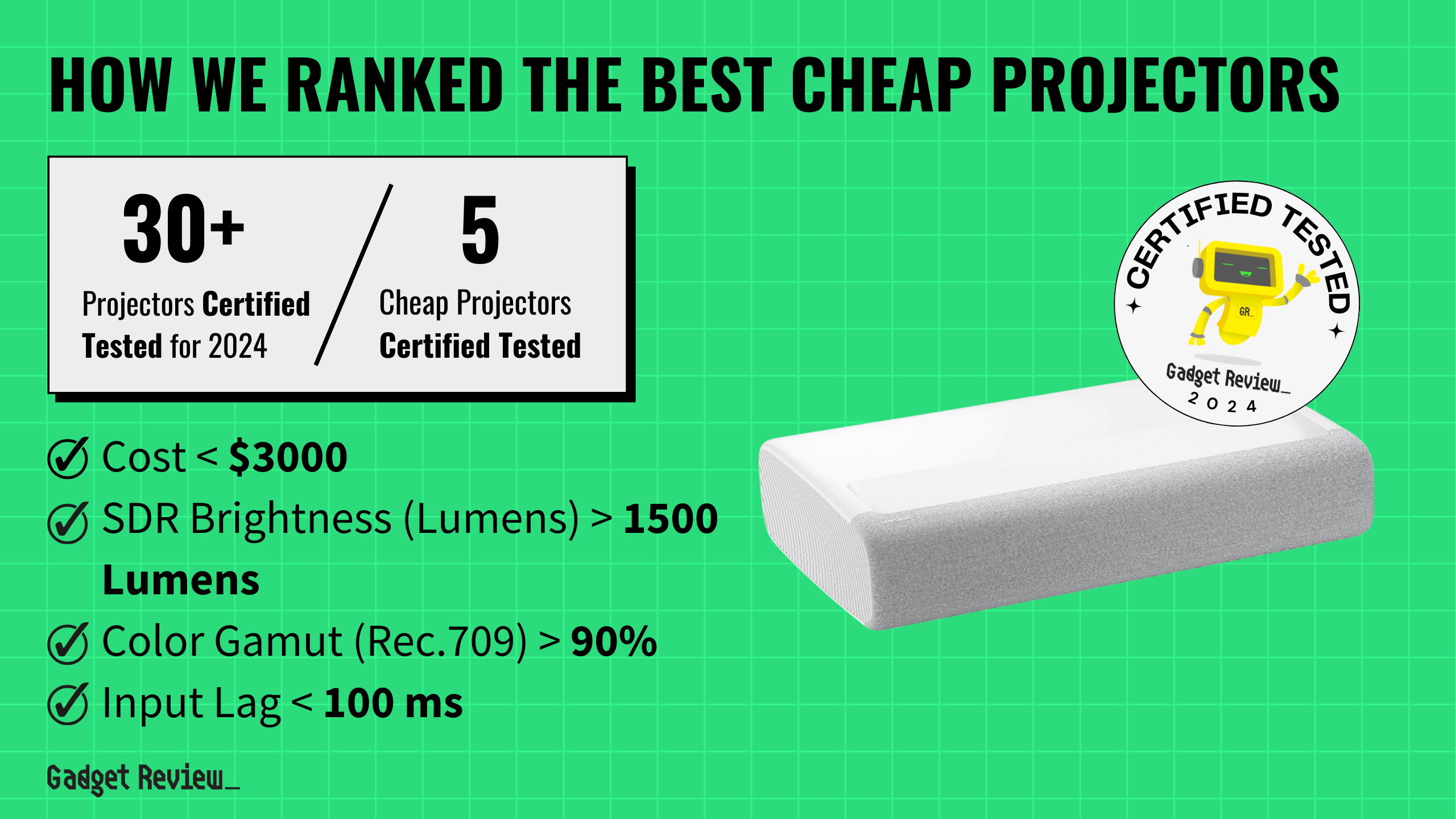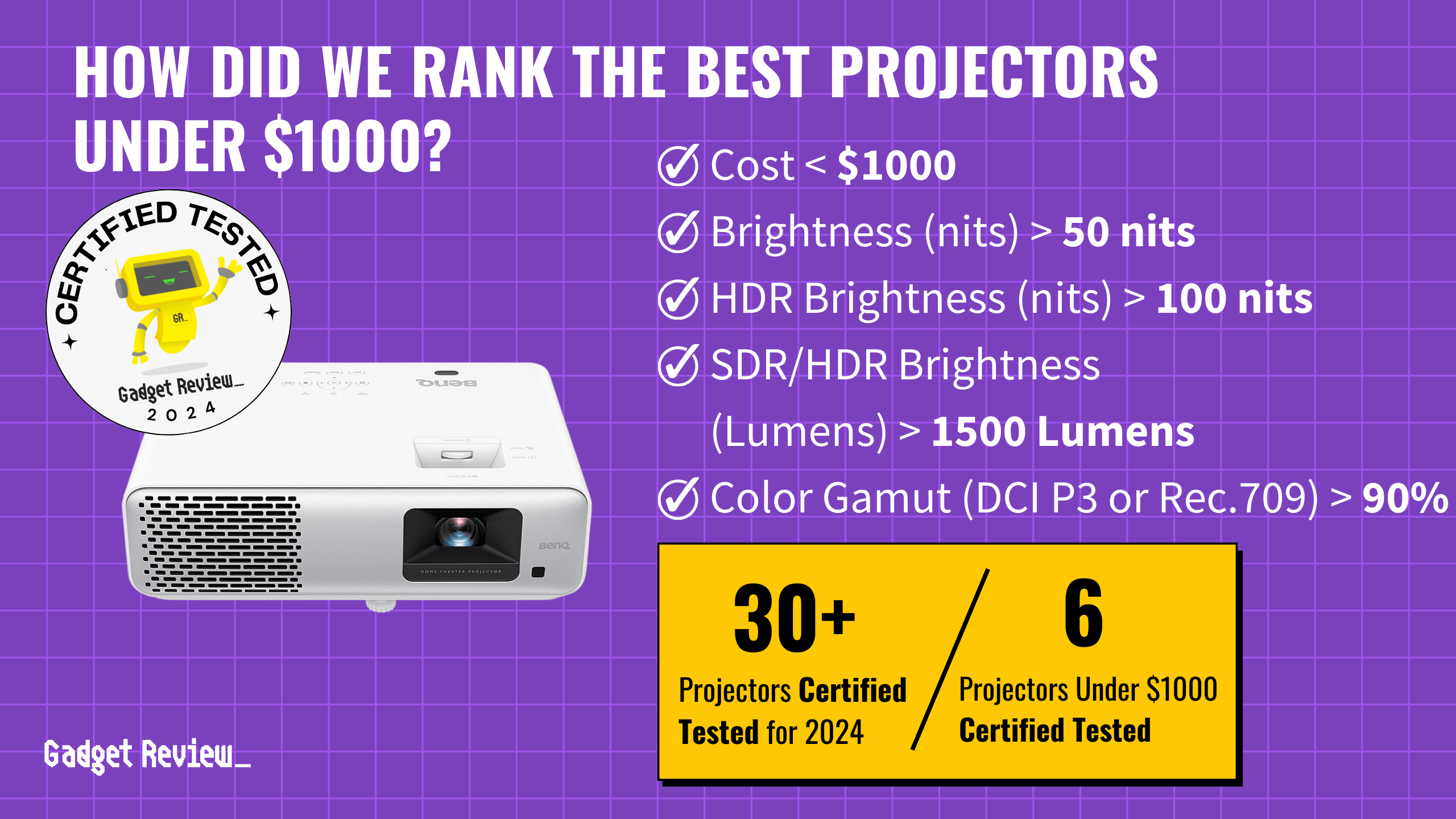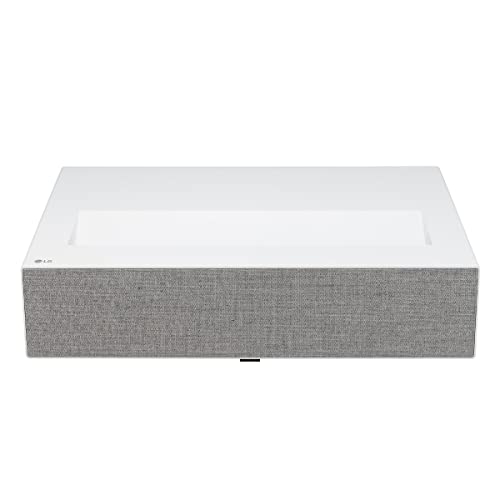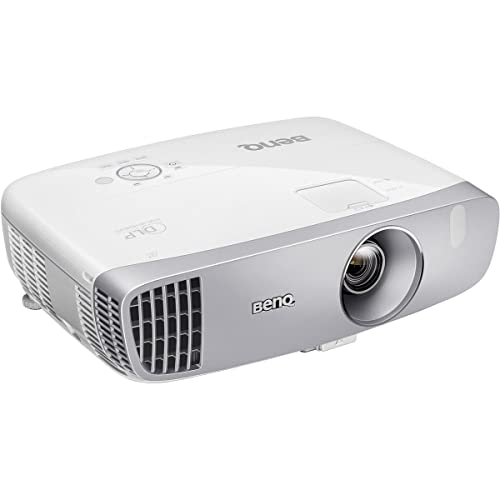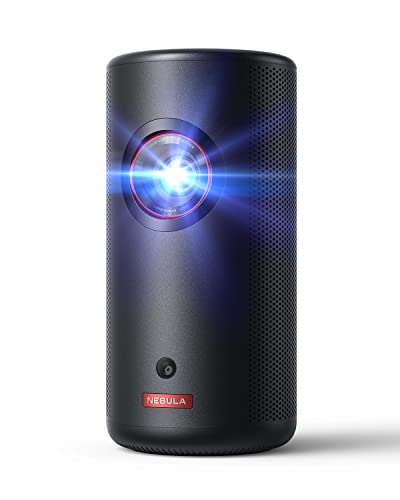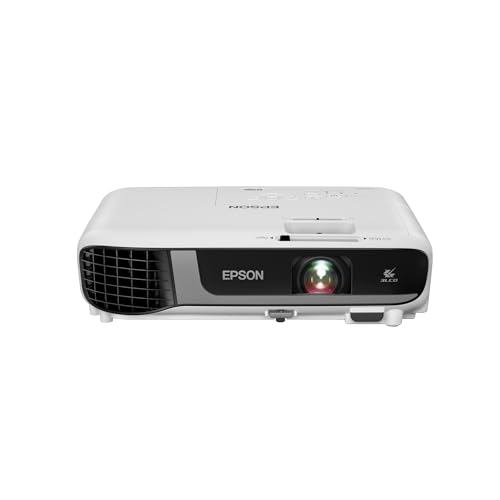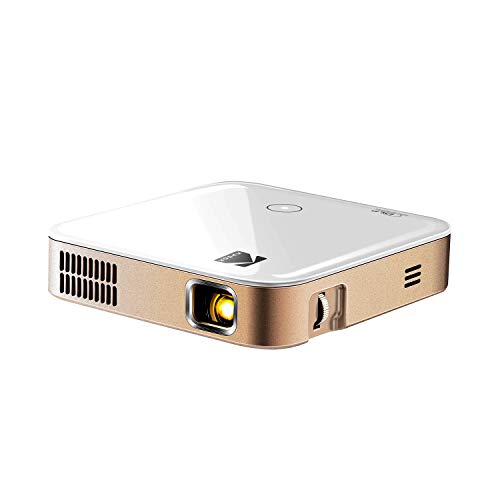If you need a projector for your church, you want to provide an immersive visual experience for your members. Look for key features like brightness, color accuracy, and input lag. You need a projector that supports a screen size of at least 150 inches to ensure visibility for large congregations and an SDR brightness of over 1500 lumens to provide clear and bright images in any light.
In our comprehensive review, we evaluated over 30 projectors and certified 5 as the best choices for church use. We analyzed 10,297 reviews, filtering out fake or low-quality reviews. Our unique approach uses our scientifically proven True Score system to ensure only the top-performing projectors in testing made the list. The winning projectors excelled in brightness, color accuracy, and ease of setup. This rigorous evaluation process helps us identify and recommend the best projectors for church settings, ensuring that each selection meets the specific needs of congregational use with superior visual performance.
How Did We Rank the Best Projectors for the Church?
To determine the best projectors for church use, we meticulously reviewed over 200 sources, examining various testing methods and customer reviews. We evaluated expert reviews and integrated our findings with our proprietary true score system. Our comprehensive analysis identified 2 required test results, 1 nice-to-have feature, and 1 must-have specification. This approach ensured we highlighted projectors that deliver exceptional brightness, clear image quality, and easy installation, meeting the unique needs of church environments.
Our commitment to unbiased reviews is powered by our ‘True Score’ system, targeting low quality and fake reviews. When you shop through our links, you’re backing our mission. Dive deeper to see how.
?️ Minimum Specifications
- Max Screen size is at least 150″
? Test Criteria
- SDR Brightness: Equal to or greater than 1500 lumens or more to help produce a bright and clear display.
- Color Gamut: At least 90% of the Rec.709 color gamut, providing rich and vibrant colors.
? “Nice To Haves”
- Input Lag: An input lag of less than 100 milliseconds to prevent delays between what’s on screen and your reaction to them in games.
Latest Updates
- 06/13/2024: Republished the list to include the best projectors for the church based on our True Score system.
Top Projectors for Church For 2025
Prices accurate at the time of publishing

Best Overall

Runner Up

Best Value

Best Budget

Best Mid-Range

Premium Pick
JVC DLA-NZ8
For church coordinators prioritizing vibrant visuals, the JVC DLA-NZ8 excels with unmatched color accuracy and brightness, ideal for varied lighting.
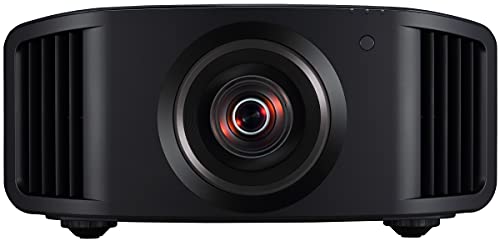
True Score
95964Experts
994Customers
Cosmic Wonder
 $9,599.99
$9,599.99Read More
Snapshot
Reasons to Buy
- Good brightness rating
- Sharp image quality
- Low 38ms input lag
Reasons to Avoid
- Bulky in size
Specifications

Resolution 4096 x 2160 Refresh Rate 240 Hz 
Display Technology D-ILA 
Contrast Ratio 80,000:1 
Digital Keystone Yes 
HDR HDR10, HDR10+, Hybrid Log-Gamma (HLG) 
Max Distance n/a 
Max Screen Size 200″ 
3D Ready Yes 
Aspect Ratio 17:9 
Brightness 2500 lumens 
Depth 20″ 
Height 9.2″ 
Integrated Speakers No 
Light Source Laser 
Light Source Life 20000 hrs 
Min Distance 85.80″ 
Min Screen Size 60″ 
Noise Level 24 dB 
Portable No 
Smart Functionality Remote 
Sync Technology n/a 
TV Tuner No 
ThrowType 1.43:1 – 2.8:1 
Video Inputs HDMI 2.0 
Weight 49.5″ 
Width 19.6″ Yes – All Specs
Test Results
SDR Brightness (Lumens) 1,999 HDR Brightness (Lumens) 1,973 Contrast Ratio (x:y) 0 Input Lag (ms) 39 Color Gamut % (Rec. 709) 138 Color Gamut % (DCI P3 uv) 95 SDR Brightness (nits) 0 HDR Brightness (nits) 0 SDR Color Temperature (K) 0 HDR Color Temperature (K) 0 Color Gamut % (Rec. 2020) 0 Color Gamut % (BT.2020) 0 Color Gamut % (BT. 709) 0 All Tests
All Retailers
- $9,599.99
- $16,000.00
Our Verdict
The JVC DLA-NZ8 stands out with its superior color accuracy, making it an outstanding projector for church coordinators seeking the most vibrant colors. It covers a best-in-class 137.6% of the Rec. 709 color space, ensuring true-to-life colors for a vivid viewing experience. It also has an impressive 95.11% DCI P3 color coverage, enhancing worship and learning experiences. With SDR and HDR brightness at 1999 and 1973 lumens, this projector ensures that sermons, religious films, and educational content are clearly displayed, even in the brightest church halls.
Comparing the JVC DLA-NZ8 to the JVC DLA-NZ7, both projectors boast a 200” max screen size and 4096 x 2160 resolution, providing crisp visuals for large venues. However, the DLA-NZ8’s higher brightness makes it a better fit for bright rooms, offering more vivid colors though at a higher cost. It also works for outdoor movies and educational presentations, where clarity in various lighting conditions is crucial. The DLA-NZ7 still provides exceptional color accuracy, delivering stunning visual quality for a cheaper price.
If you’re looking for a projector that delivers high-quality visuals across a broad range of settings, the DLA-NZ8 is a superb option. Its standout features include its extensive color gamut and brightness for well-lit environments. While the price is steep, its performance and versatility, especially in home theaters or educational settings, make it well worth it if you’re an educator, home theater enthusiast, or church coordinator who prioritizes the best colors and visual quality.
Read Less

Best Overall

Runner Up

Best Value

Best Budget

Best Mid-Range

Premium Pick
JVC DLA-NZ7
For church leaders seeking a valuable projector with vivid colors for sermons, the JVC DLA-NZ7 offers vibrant, accurate visuals in various light settings.
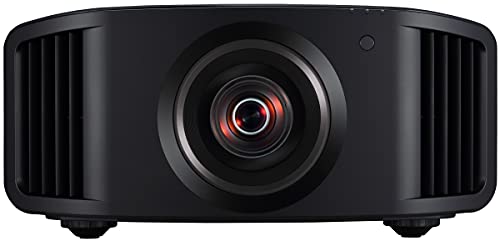
True Score
87914Experts
887Customers
Absolutely Fresh
 $7,499.99
$7,499.99Read More
Snapshot
Reasons to Buy
- Good brightness rating
- High image quality
- Average input lag
Reasons to Avoid
- Remote is not ideal for making adjustments
Specifications

Resolution 4096 x 2160 Refresh Rate n/a 
Display Technology D-ILA 
Contrast Ratio 400,000:1 
Digital Keystone Yes 
HDR HDR10, HDR10+, Hybrid Log-Gamma (HLG) 
Max Distance 510″ 
Max Screen Size 200″ 
3D Ready Yes 
Aspect Ratio 17:9 
Brightness 2200 Lumens 
Depth 20″ 
Height 9.2″ 
Integrated Speakers No 
Light Source Laser 
Light Source Life 20000 hrs 
Min Distance 74.4″ 
Min Screen Size 60″ 
Noise Level 24 dB 
Portable No 
Smart Functionality No 
Sync Technology No 
TV Tuner No 
ThrowType 1.40:1 – 2.80:1 
Video Inputs HDMI 2.0 
Weight 49.5″ 
Width 19.69″ Yes – All Specs
Test Results
SDR Brightness (Lumens) 1,634 HDR Brightness (Lumens) 1,636 Contrast Ratio (x:y) 0 Input Lag (ms) 37 Color Gamut % (Rec. 709) 123 Color Gamut % (DCI P3 uv) 85 SDR Brightness (nits) 0 HDR Brightness (nits) 0 SDR Color Temperature (K) 6,901 HDR Color Temperature (K) 6,866 Color Gamut % (Rec. 2020) 0 Color Gamut % (BT.2020) 56 Color Gamut % (BT. 709) 0 All Tests
All Retailers
- $7,499.99
- $8,999.95
Our Verdict
If you’re a church leader needing a projector that’s a good value and delivers vivid colors for sermons and lectures, the JVC DLA-NZ7 is a great option with exceptional color accuracy. It boasts an impressive 123.4% coverage of the Rec. 709 color gamut, ensuring vibrant and accurate colors for all types of visuals. It also has an 85.3% DCI P3 color gamut, catering to congregations expecting engaging and immersive content. It stands out with its 1,633.5 SDR and 1,636 HDR lumens brightness, capable of producing clear images in various lighting conditions, ideal for church settings where ambient light can vary.
The JVC DLA-NZ7 and its sibling, the DLA-NZ8, both share a 200” max screen size and 4096 x 2160 resolution, ensuring large, crisp visuals for big spaces. While the DLA-NZ8 excels in brighter environments with higher brightness and more vivid colors, the DLA-NZ7 offers a cost-effective alternative without significantly compromising visual quality. This balance makes it appealing for churches where budget considerations are as important as performance.
The JVC DLA-NZ7 serves well beyond church walls, suitable for home theaters, outdoor movie nights, and educational settings, thanks to its high resolution and commendable color gamut. While it may not be the brightest model available, its color performance offers an immersive viewing experience. If you’re an educator, home theater aficionado, and church event organizer who values vivid colors and detailed imagery, the JVC DLA-NZ7 strikes a fine balance between quality and value.
Read Less

Best Overall

Runner Up

Best Value

Best Budget

Best Mid-Range

Premium Pick
Epson Home Cinema 3800
Best For Epson
Epson Home Cinema 3800 offers vibrant, clear visuals with high contrast, perfect for churches, at an affordable price and a large max display.
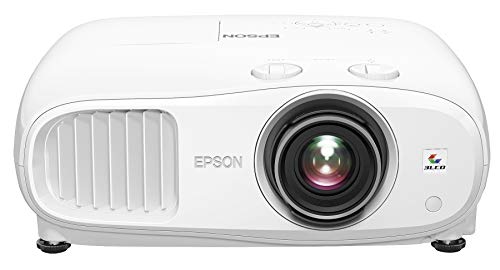
True Score
83846Experts
871kCustomers
Absolutely Fresh
 SAVE $100$1,699.99$1,599.99
SAVE $100$1,699.99$1,599.99Read More
Snapshot
Reasons to Buy
- Great brightness
- Great image quality
- 4K resolution
Reasons to Avoid
- Lacks a wide color gamut
- The lamp output may not match the specs
- Mediocre 28-ms input lag
Specifications

Resolution 1920 x 1080 (Full HD) Refresh Rate 60 Hz 
Display Technology 3LCD, LCD 
Contrast Ratio 100,000:1, 200,000:1 
Digital Keystone ± 30° (manual) 
HDR No, Yes 
Max Distance 300″ 
Max Screen Size 300″ 
3D Ready No, Yes 
Aspect Ratio – 
Brightness 3000 lumens 
Depth 13″ 
Height 6.5″ 
Integrated Speakers No, Yes 
Light Source UHP lamps 
Light Source Life 3,500 hrs 
Min Distance 0″ 
Min Screen Size 40″ No – 
Noise Level 35 dB 
Portable No, Yes 
Smart Functionality Automatic Adjustments, Bluetooth, Eco-Friendly, Energy-Saving, Remote, USB 
Sync Technology VRR 
TV Tuner No, Yes 
ThrowType 1.32 to 2.15:1. 
Video Inputs HDMI 2.0, USB, VGA 
Weight 15.2 lbs 
Width 16.1″ All Specs
Test Results
SDR Brightness (Lumens) 2,176 HDR Brightness (Lumens) 0 Contrast Ratio (x:y) 24k Input Lag (ms) 28 Color Gamut % (Rec. 709) 114 Color Gamut % (DCI P3 uv) 77 SDR Brightness (nits) 275 HDR Brightness (nits) 235 SDR Color Temperature (K) 0 HDR Color Temperature (K) 0 Color Gamut % (Rec. 2020) 0 Color Gamut % (BT.2020) 0 Color Gamut % (BT. 709) 0 All Tests
All Retailers
- $1,599.99$1,700Save $100
- $1,599.99$1,700Save $100
- $1,599.99$1,700Save $100
- $1,699.99
Our Verdict
The Epson Home Cinema 3800 excels in delivering large images with exceptional contrast, being an affordable and high-quality projector. Boasting a brightness of 2,176 lumens for Standard Dynamic Range (SDR) content, alongside a superior 275.2 nits for SDR and 235.4 nits for High Dynamic Range (HDR), it provides vibrant and clear visuals for well-lit sanctuaries or fellowship halls. Moreover, with a great contrast ratio of 23,971:1, this projector is designed to produce vivid, sharp images with profound blacks and luminous whites, enhancing both worship and educational environments.
With 113.7% coverage of the Rec. 709 color gamut, it offers accurate color representation, making every video presentation vibrant and true to life. With its superior max screen size of 300 inches, the Epson provides an expansive display perfect for church halls, enabling congregations to engage with visuals on a grand scale.
Compared with the Formovie Theater Review, both models offer great color accuracy and project vivid colors. Though the Formovie is more expensive, it offers better brightness for brighter churches that hold events during the day. The more affordable Epson has superior contrast, ensuring optimal visibility and depth for reading projected text, and its max screen size is double the size of the Formovie’s, which is helpful for very large church halls.
If you’re a church leader, director, or educator, the combination of cost-effectiveness, brightness, and significant contrast makes the Epson Home Cinema 3800 a prime selection. Despite it not being the bright or most colorful option, it still delivers excellent visual quality with minimal delay, providing a versatile and reliable option if you need to enhance religious events or lectures without incurring a high expense.
Read Less

Best Overall

Runner Up

Best Value

Best Budget

Best Mid-Range

Premium Pick
Formovie Theater
Best For Short Throw
The Formovie Theater projector excels for church use with its bright display and vibrant colors, ideal for engaging congregants in well-lit halls.
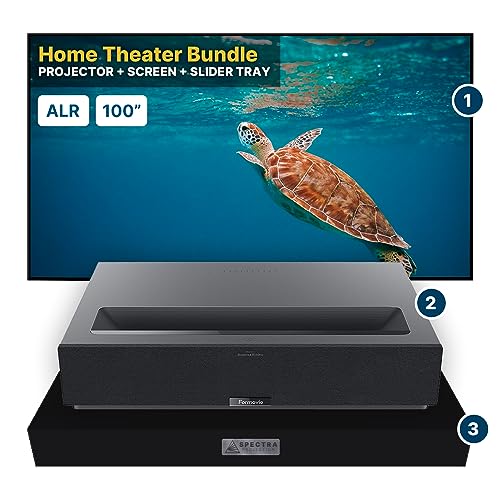
True Score
81828Experts
8443Customers
Absolutely Fresh

Read More
Snapshot
Reasons to Buy
- Satisfying brightness rating
- Good image quality
- Low latency
Reasons to Avoid
- Poor color accuracy out-of-the-box
- No lens shift adjustability
Specifications

Resolution 3840 x 2160 (4k) Refresh Rate 60 Hz 
Display Technology TI DLP 
Contrast Ratio 3,000 : 1 
Digital Keystone No 
HDR Dolby Vision, HDR10, HDR10+ 
Max Distance 19″ 
Max Screen Size 150″ 
3D Ready No 
Aspect Ratio 16:9 
Brightness 2800 Lumens 
Depth 13.78″ 
Height 4.3″ 
Integrated Speakers Yes 
Light Source Laser 
Light Source Life 20000 hrs 
Min Distance 5.51″ 
Min Screen Size 80″ 
Noise Level 28 dB 
Portable No 
Smart Functionality Yes 
Sync Technology – 
TV Tuner No 
ThrowType Ultra Short Throw Technology 
VRR n/a 
Video Inputs USB 
Weight 21.6 lbs 
Width 21.6″ Yes – All Specs
Test Results
SDR Brightness (Lumens) 2,837 HDR Brightness (Lumens) 2,676 Contrast Ratio (x:y) 1,917 Input Lag (ms) 41 Color Gamut % (Rec. 709) 100 Color Gamut % (DCI P3 uv) 107 SDR Brightness (nits) 125 HDR Brightness (nits) 105 SDR Color Temperature (K) 0 HDR Color Temperature (K) 0 Color Gamut % (Rec. 2020) 82 Color Gamut % (BT.2020) 90 Color Gamut % (BT. 709) 0 All Tests
All Retailers
Our Verdict
If you need a 4K projector that enhances worship and education in bright church halls, the Formovie Theater stands out with its incredible brightness. It has a great SDR brightness of 2,837 lumens and an HDR brightness of 2,676 lumens, ensuring that sermon visuals and religious films are clearly displayed, even in brightly lit spaces. Its SDR and HDR brightness levels at 124.6 nits and 105.4 nits contribute to clear and vibrant images essential for engaging congregations.
With an unmatched color gamut of 106.81% DCI P3 uv, the Formovie offers vibrant and accurate hues, crucial for portraying religious art and visuals in their true essence. It also achieves 100% coverage of the Rec. 709 color gamut, guaranteeing true-to-life color reproduction for religious and educational video materials. Its contrast ratio of 1,917:1 provides deep blacks and bright whites, enhancing image depth and making text easier to read.
When comparing it to the Formovie Theater, both projectors excel in color accuracy, delivering vibrant hues. However, the Formovie, at a higher price, provides better brightness suitable for churches with well-lit interiors hosting daytime events. On the other hand, the more cost-effective Epson outperforms in contrast, offering superior clarity and depth essential for displaying legible text. It also boasts a maximum screen size twice that of the Formovie, ideal for large church spaces.
If you’re a church leader or educator dealing with a space filled with ambient light, this projector is a solid pick. Despite its higher cost and not having the highest contrast on the list, the Formovie excels in delivering excellent color accuracy and brightness, key for maintaining visual quality if you need a reliable projector in a bright hall or classroom.
Read Less

Best Overall

Runner Up

Best Value

Best Budget

Best Mid-Range

Premium Pick
Epson LS800B
Best For Daylight Viewing
Epson LS800B excels with top brightness, sharp images for well-lit venues, and vibrant colors, ideal for churches and presentations.
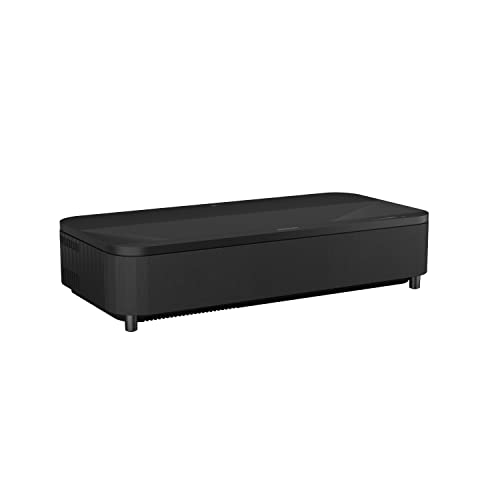
True Score
73754Experts
7698Customers
Mixed Reviews
 SAVE $510$3,499.99$2,990.00
SAVE $510$3,499.99$2,990.00Read More
Snapshot
Reasons to Buy
- Great brightness
- Good image quality
- Low input lag
- Ultra short throw
Reasons to Avoid
- Limited color gamut
- Limited connectivity
- Not 3D-enabled
Specifications

Resolution 3840 x 2160 (4k) Refresh Rate 240 Hz 
Display Technology 3LCD 
Contrast Ratio 2,500,000:1. 
Digital Keystone No 
HDR Yes 
Max Distance 19″ 
Max Screen Size 150″ 
3D Ready No 
Aspect Ratio 16:9 
Brightness 4000 Lumens 
Depth 13.4″ 
Height 6.1″ 
Integrated Speakers Yes 
Light Source Laser 
Light Source Life 10 years² 
Min Distance 11″ 
Min Screen Size 80″ No – 
Noise Level 19 dB 
Portable No 
Smart Functionality Android TV, Bluetooth, Energy-Saving, Remote, USB 
Sync Technology – 
TV Tuner – 
ThrowType 0.16 to 0.40:1 
Video Inputs HDMI 2.0, USB 
Weight 27 lbs 
Width 27.2″ All Specs
Test Results
SDR Brightness (Lumens) 4,084 HDR Brightness (Lumens) 0 Contrast Ratio (x:y) 0 Input Lag (ms) 22 Color Gamut % (Rec. 709) 0 Color Gamut % (DCI P3 uv) 93 SDR Brightness (nits) 0 HDR Brightness (nits) 0 SDR Color Temperature (K) 0 HDR Color Temperature (K) 0 Color Gamut % (Rec. 2020) 0 Color Gamut % (BT.2020) 0 Color Gamut % (BT. 709) 137 All Tests
All Retailers
- $2,990.00$3,500Save $510
Our Verdict
The Epson LS800B excels in bright churches with its best-in-class 4,084 lumens of SDR brightness, projecting crisp images and text. This projector ensures that images remain vibrant and clear, even under strong ambient lighting, a critical aspect for venues where control over lighting might be limited. Its unbeatable 2,500,000:1 contrast ratio guarantees deep blacks and bright whites, crucial for maintaining detail in images with text, live feeds, and pre-recorded messages.
With a color gamut of 137.4% Rec 709, the projector delivers exceptionally vibrant colors, ensuring every visual element looks appealing and grabs attention. Moreover, its superior input lag of 21.8ms makes it good for live events and prevents noticeable delays.
Comparing the Epson LS800B with the Epson Home Cinema 3800, the LS800B is a 4K projector with superior brightness, contrast, and color accuracy, projecting overall better image quality to combat ambient light but at a higher price. It does have a smaller max screen size of 150” vs the Home Cinema 3800 which expands to 300”. While the Home Cinema 3800 has a lower resolution, it’s still a great value for its solid picture quality, making it ideal for large spaces and if you’re on a budget.
Beyond church applications, the LS800B would also suit educational purposes or business presentations due to the detailed, easy-to-read images it projects. Despite its high price and small max screen size, this projector’s crisp image quality in smaller, bright spaces justifies the investment.
Read Less
Which Criteria Matters for Testing Best Projectors for Church?
By focusing on these criteria (2 required, 1 nice to have), anyone can quickly and easily compare these projectors and how they’ll perform. This helps you make an informed decision and purchase a projector that will meet all of your needs.
| CRITERIA | RANGE | REQUIRED | DEFINITION |
|---|---|---|---|
| SDR Brightness (lumens) | > 1500 lumens | Yes | The amount of light the projector outputs from the lamp/bulb and projects onto the screen when playing SDR content. |
| Color Gamut % (Rec. 709) | > 90% | Yes | The % of colors a projector can produce defined by the gamut. Rec. 709 is commonly used by HD TV, and is also known as BT.709. |
| Input Lag | < 100 ms | No (Nice to have) | The amount of time it takes for inputs to be registered and processed by the projector and shown on screen. |
Our Trusted Data Sources
We looked at 86+ projector reviewers and found that 16 are trustworthy (60%+ Trust Rating). The three we have listed below are our most trusted for projector.
- Pierre-Olivier Jourdenais – Rtings, LinkedIn
- Geoffrey Morrison – CNET, MuckRack
- Kam Valentine – Projector Reviews, MuckRack
Interested in a comprehensive analysis of our data sources? We’ve got you covered. Below, you’ll find a detailed list of every projector review website we’ve identified, organized by their respective Trust Ratings from highest to lowest. But we didn’t stop there. We’ve meticulously reviewed each publication and verified the data by checking whether the authors have bio links to MuckRack or LinkedIn. We’re committed to not only checking the facts but ensuring their veracity.
Projector Test Data & Results
Disclaimer:
Projectors are complex and difficult to test and evaluate, requiring extensive testing on the same level as televisions to paint a complete picture of how any given unit performs. Unfortunately, the testing behind projectors isn’t as rigorous, and a lot of the data we’ve compiled from expert reviewers has been incomplete at times. With different brightnesses measured from different sources, different color gamut tested and spotty contrast ratio measurements, we’ve done the best we can to leverage the available data when putting together these lists but have also trusted our True Score to help us make decisions when the data isn’t available.
1. SDR Brightness (lumens) Test Results
Projectors have two ways you can realistically measure brightness: in lumens or in nits. Lumens are more common, but brightness in general matters because projectors have to project light strongly enough that it overcomes ambient light without losing detail or color.
Most of the time, a projector is going to be used in a fairly dark room to help give the unit the best chance of displaying content the way it was intended, but higher lumens output let you watch content in progressively bright spaces – or across longer distances on bigger screens. For standard dynamic range content, we recommend at least 1500 lumens for most home applications, but more isn’t a bad thing, and 3000 lumens or more are ideal.
SDR Brightness (lumens)
> 1500 lumens
Acceptable range of performance
Definition: The amount of light the projector outputs from the lamp/bulb and projects onto the screen when playing SDR content, measured in lumens.
Units of Measurement: Lumens
Tools to Measure: Lux meter
Why It’s Important:
Lumens affect how an image is going to look when projected on a screen. If the projector isn’t putting out enough light, the image quality will suffer.
SDR Brightness (lumens; higher is better; 0 = No Data)
2. Color Gamut % (Rec. 709) Test Results
Color Gamut % (Rec. 709)
> 90%
Acceptable range of performance
Definition: The % of colors a projector can produce defined by the gamut.
Units of Measurement: % (percentage)
Tools to Measure: Software
Why It’s Important:
This gamut is commonly used by HD TV, so covering it is necessary if you watch a lot of HD content.
If you watch a lot of high-definition TV such as HD sports, you’ve experienced the Rec.709 gamut. This gamut is employed mostly by HD television, so covering as much of it as you can is ideal. Fortunately, the Rec.709 gamut is smaller than the DCI-P3 gamut, so if you have good coverage of DCI-P3, it’s very likely you have good coverage of Rec.709. This gamut is also known as BT.709.
Regardless, we recommend you have a Rec.709 coverage of at least 90%, especially if HD TV is what you spend most of your time watching. Not covering enough of the gamut directly contributes to seeing inaccurate colors on things like sports uniforms or otherwise vibrant sets on your favorite TV shows.
Color Gamut Rec. 709 (%; higher is better; 0 = No Data)
6. Input Lag (ms) Test Results
Input Lag (ms)
< 100 ms
Acceptable range of performance
Definition: The amount of time it takes for inputs to be registered and processed by the projector and shown on screen.
Units of Measurement: ms (milliseconds)
Tools to Measure: Input lag tool
Why It’s Important:
Low input lag is important to reduce delay when gaming.
Input lag is primarily an issue when it comes to playing video games on your projector. If you’re trying to enjoy fast-paced shooters or are using projector to play competitive modes, you’ll need a low input lag to “keep the projector out of your way”, so to speak. High input lag causes delays in your inputs and makes it harder to react to action on screen because your own physical reactions start to count for less than the projector’s ability to process what you’re doing.
For this reason, we recommend an input lag of 100 ms or less, but lower is always better, and for really competitive games we’d recommend less than 15 ms. Any more than that and your projector is better suited to playing games casually, though if you don’t play anything fast paced, input lag is less of an issue.
Input Lag (ms; lower is better; 0 = No Data)
Best Projectors for Church: Mistakes To Avoid
- Ignoring Ambient Light: Churches often have varying levels of ambient light due to windows, lighting fixtures, or skylights. Ignoring ambient light conditions can result in poor visibility of projected content. Choose a projector with high brightness (measured in lumens) to ensure clear visibility even in well-lit environments. For these settings, opting for a projector for bright rooms or the best projectors for daylight viewing is crucial, as they are specifically designed to offer excellent performance in environments with substantial ambient light, ensuring that the congregation can see images clearly regardless of the time of day.
- Resolution Mismatch: Just like in classrooms, ensure the projector’s resolution matches the content you’ll be displaying. For church presentations, a higher resolution (1080p or higher) is recommended to ensure clarity, especially for text-heavy slides or videos.
- Lack of Connectivity Options: Churches may use a variety of devices for presentations, including computers, DVD players, or media streaming devices. Ensure the projector has multiple connectivity options such as HDMI, VGA, and USB to accommodate different devices and setups.
- Not Considering Throw Distance: The size and layout of the church venue will determine the optimal throw distance for the projector. Failure to consider throw distance can result in images being too small or too large for the projection screen, affecting visibility and clarity. When deciding between a short-throw projector vs long throw projector for your church, consider that short-throw projectors are better suited for smaller spaces or where the projector can be placed relatively close to the screen, while long-throw projectors are ideal for larger venues where the projector needs to be placed far from the screen without sacrificing image size or quality.
The Best Projectors for Church Tests Compared
Product |
True Score
|
SDR Brightness
|
HDR Brightness
|
Contrast Ratio
|
Color Gamut % (DCI P3 uv)
|
Input Lag (ms)
| |
|---|---|---|---|---|---|---|---|
| 95 |
|
|
|
|
| $9,599.99 |
87 |
|
|
|
|
| $7,499.99 | |
| 83 |
|
|
|
|
| $1,599.99 $1,700 $100 |
| 81 |
|
|
|
|
| |
| 73 |
|
|
|
|
| $2,990.00 $3,500 $510 |







